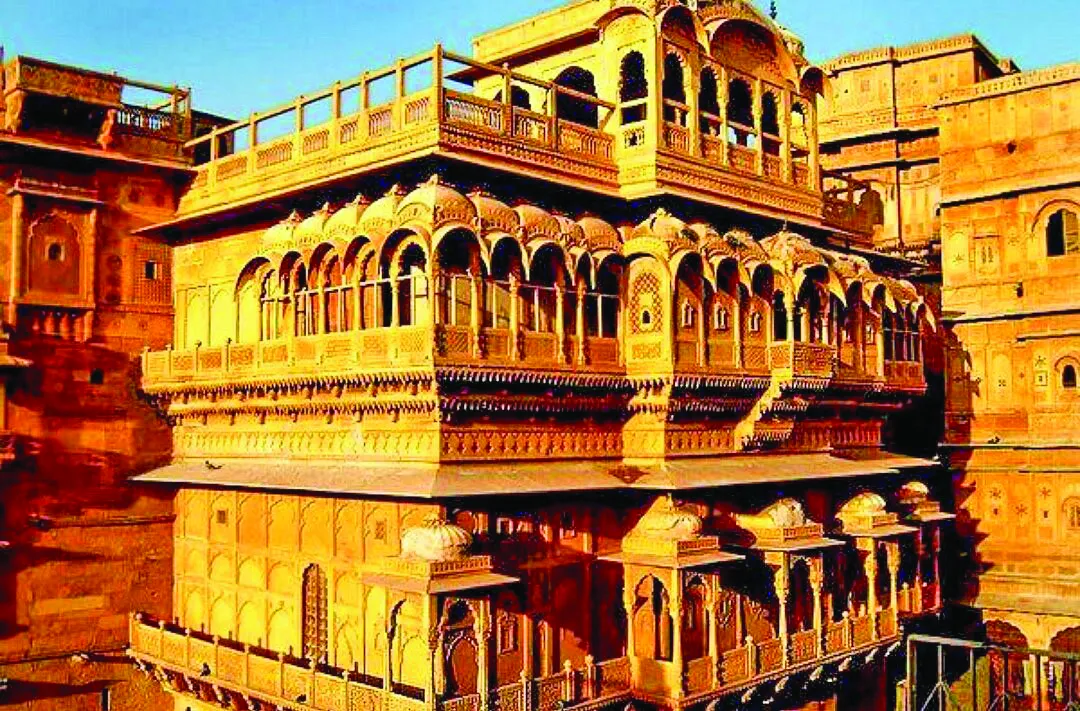From the chiselled finesse of the rock-cut caves at Udaygiri and Khandagiri to the sculpted splendour of the Sun Temple at Konark, the architectural marvels scattered across Odisha have continued to bear testimony to the dexterity of the local craftsmen for centuries. While religious influences encouraged an impressive array of structures in the state, local artisans wielded their magic in equal measure to erect a magnificent constellation of palaces belonging to the princely states of Odisha.

Entrance of Dhenkanal Palace

Sailashree Palace at Bolangir

Raja Parija, the author of ‘Royal Heritage of Odisha’

Entrance of Nilgiri Palace that earlier functioned as a lighthouse
Locally known as ‘Rajbati’ or the King’s abode, each of these palaces exhibit a unique design sensibility complementing the topography of the location. Perched on the slopes of the Paniohala hills, Dhenkanal Palace is the only regal structure in Odisha incorporated with the features of a fort and a palace. It has a blooming natural garden on the second floor of the citadel.
Be it the century-old still functional sun-dial at Baramba Palace that is strategically located to receive apt sunlight throughout the year or the intricately crafted ‘Chatris’ at Bolangir Palace, the intriguing tales about the structural brilliance of these palaces were waiting to be explored. And then a native bureaucrat Raja Parija curated the coffee table book ‘Royal Heritage of Odisha.’

“The legacy of these palaces extends way beyond their walls of brick and mortar,” says Parija, who is currently posted as the Special Secretary cum Director of SC & ST Development Department, Government of Odisha. “Since royal families were the most loyal patrons of their region’s art and culture, I have made a conscious effort to explore these palaces beyond their architectural glory and delve into the fascinating stories associated with their socio-cultural context.”
The author believes that every palace has its own unique story to tell, and he has left no stone unturned while researching this book to bring forth the choicest glimpses of the bygone era. Covering a distance of over 10,000 kilometres across the state over several years, Raja Parija has collected first-hand information from the members of the royal families to compile a priceless treasure of captivating stories.
Yuvrani Meenal Jhala Singh Deo of Dhenkanal had narrated how Maharaja Bhagirath Mahindra Bahadur had chanced upon the location of the present palace in the 1830’s and got inspired to build the ‘rajbati’ on this spot after being impressed by the bravery of a dove that was valiantly defending itself against a hawk on this land of the brave.

He believes that every palace has a unique story, and left no stone unturned to bring forth the choicest glimpses of the bygone era in this book. Parija has collected first-hand information from the members of the royal families to compile a priceless treasure of captivating stories. Yuvrani Meenal Jhala Singh Deo of Dhenkanal had narrated how Maharaja Bhagirath Mahindra Bahadur had chanced upon the location of the present palace in the 1830s and got inspired to build the ‘rajbati’ on this spot after being impressed by the bravery of a dove that was valiantly defending itself against a hawk on this land of the brave. Raja Jayant Mardaraj of Nilgiri had shared how the towering entrance gate of the palace was originally constructed as a lighthouse during World War II by the British forces. The former lighthouse now stands peacefully as a part of the palace complex.
Another slice of riveting history was revealed by Yuvraj Vijayendra Chandra Deb about how the ‘Singha Dwar’ or the Lion Gate of Talcher Palace was built by his ancestor Raja Ram Chandra Birabar Harichandan in the 1870’s under a famine relief scheme to provide food and employment with dignity to the people of this region. When a scanty monsoon followed by casual export of food grains under the British regime broke the backs of the locals, the benevolent ruler rose to the occasion and resurrected the socio-economic structure of this area.
“Exploring such inspirational stories from the past not only create a sense of pride, but they also inculcate a feeling of territorial loyalty towards our tangible heritage,” feels Parija. Piecing together one story after another has certainly evolved his deep sense of admiration towards Odisha’s regal history. He exclaims,“Heritage is our legacy from the past, what we live with today, and pass on to our coming generations. We must learn to appreciate what we have before time makes us appreciate what we had.”























